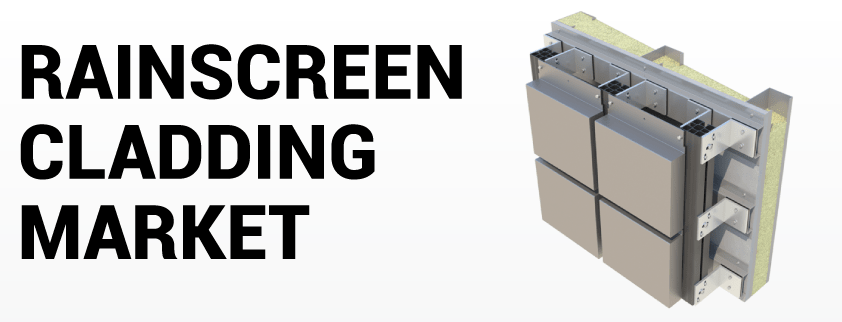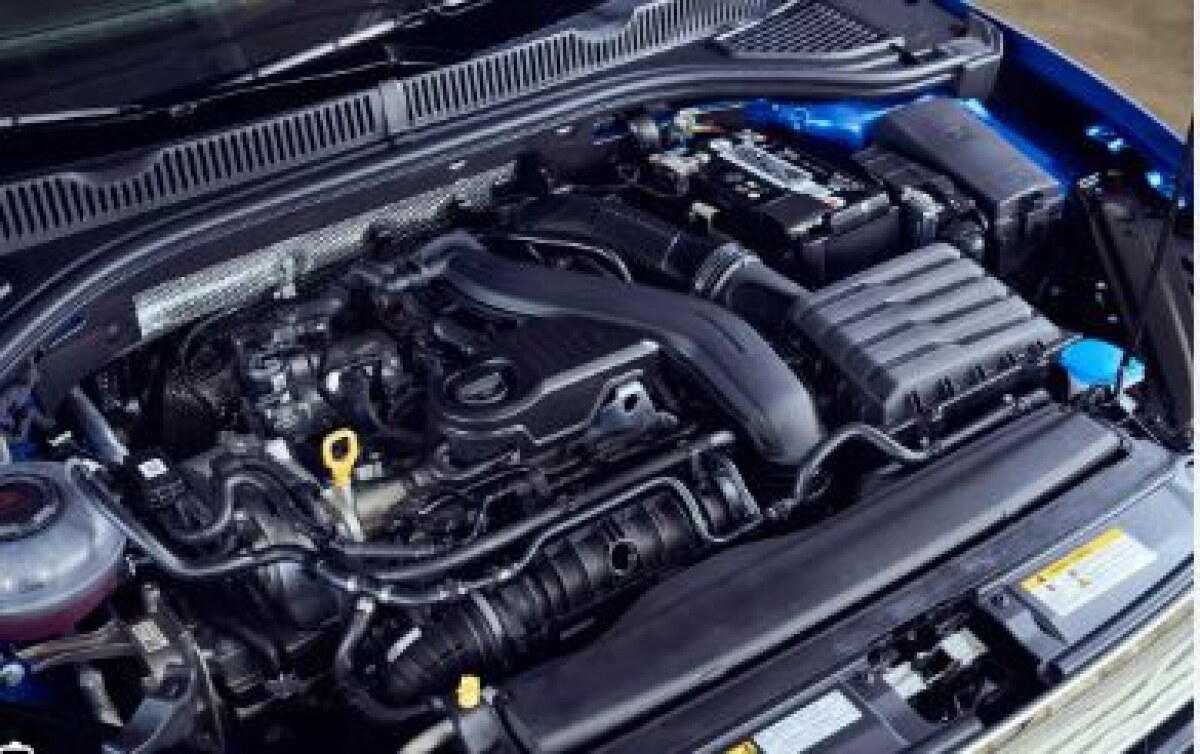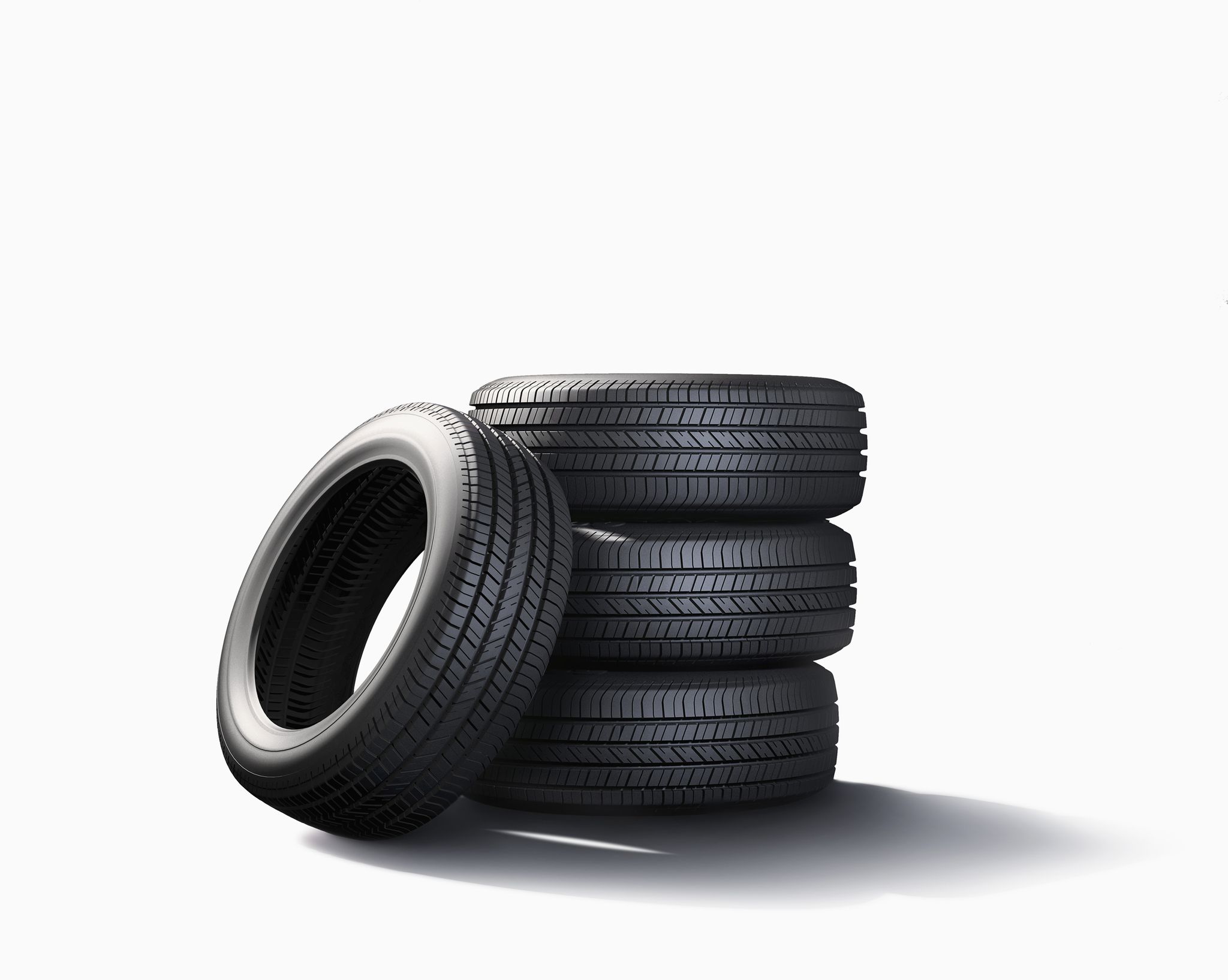Global Automotive Actuators market size was USD 18.6 billion in 2023 and the market is projected to touch USD 34.86 billion by 2032, at a CAGR of 6.6 % during the forecast period. Automotive actuators are becoming more and more important in lowering traffic fatalities as technology advances. They are widely used in a wide range of vehicle types, such light commercial vehicles, passenger vehicles, and big commercial vehicles, for throttle control, seat adaptation, brake operation, and closure mechanisms. The goal of installing various actuators in these cars is to improve comfort and safety. There are three primary categories of automotive actuators: pneumatic, electric, and hydraulic. Because of their advantages such as reduced noise emissions, lightweight and compact designs, and flexible installation options electric actuators have become more and more popular worldwide, gradually displacing hydraulic and pneumatic actuators. Original equipment manufacturers (OEMs) have made considerable investments in installing different actuators to improve the driving experience as comfort features are now a universal necessity in passenger cars. Electric actuators are widely utilized in light commercial, passenger, and heavy commercial vehicles for comfort-related activities including windows lift drives, power gate drives, seat drives, and sunroof drives, amongst others.
Automotive actuators are becoming more and more popular as they lack energy, stop engines from starting, and emit fewer greenhouse gases. Furthermore, these actuators recognize object distance, vehicle movement, and speed thanks to Internet of Things (IoT) technology. Additionally, a number of other factors are anticipated to support the automotive actuators market during the projected years, including the rising sales of autonomous vehicles and the growing usage of automotive actuators in HVAC systems and refrigerants.
Global Automotive Actuators report scope and segmentation.
| Report Attribute | Details |
| Base Year | 2023 |
| Forecast Years | 2024 – 2032 |
| Estimated Market Value (2023) | USD 18.6 Billion |
| Projected Market Value (2032) | USD 34.86 Billion |
| Segments Covered | By Product Type, By Vehicle Type, By Application, & By Region. |
| Forecast Units | Value (USD Million or Billion) |
| Quantitative Units | Revenue in USD million/billion and CAGR from 2024 to 2032. |
| Regions Covered | North America, Europe, Asia Pacific, Latin America, and Middle East & Africa. |
| Countries Covered | U.S., Canada, Mexico, U.K., Germany, France, Italy, Spain, China, India, Japan, South Korea, Australia, Brazil, Argentina, GCC Countries, and South Africa, among others. |
Global Automotive Actuators dynamics
The factors influencing the dynamics of the Global Automotive Actuators market include regulatory mandates, technological advancements, and increasing industrial safety awareness. The automotive actuators market is growing mainly because to the growing need for vehicle engines to be smaller in order to increase fuel efficiency. More reasons to be optimistic about the widespread installation of automotive actuators in cars include the growing number of road accidents caused by reckless driving, intoxication, and loss of control. Furthermore, governments in a number of nations are encouraging the use of hydraulic and electric automotive actuators in cars, which is fueling the market’s expansion, as environmental awareness has grown. Fuel that ignites internally in the engine and releases greenhouse gas emissions is not needed for these mechanical systems.
Global Automotive Actuators drivers
Growing Demand for Advanced Driver Assistance Systems (ADAS)
The higher assistance systems, or ADAS, are becoming increasingly widespread in modern cars since they improve safety and convenience while driving. ADAS components include automated parking, collision avoidance systems, adaptive cruise control, and lane-keeping assistance. Actuators are the primary portions of these systems that guarantee accurate and fast operation; they also control the steering wheel, brakes, & throttle, among other vehicle elements. The legislature’s efforts to establish stricter restrictions on vehicle safety as well as consumers’ increased desire for cars with these advanced safety features are driving the automotive actuator industry.
Rise in Electric and Hybrid Vehicles
The market for automotive actuators is also significantly influenced by the worldwide trend toward electric and hybrid automobiles. In comparison to conventional internal combustion engine (ICE) vehicles, electric and hybrid vehicles have more actuators needed because of their intricate powertrain systems and extra features like regenerative braking, electric power steering, and battery management systems. With the auto industry placing more emphasis on reducing carbon emissions and adhering to stricter environmental regulations, the adoption of hybrid and electric cars is increasing. The need for different kinds of actuators, which are necessary for these vehicles to function and behave as intended, is rising as a result.
- Restraints:
High Costs of Advanced Actuators
The most recent models commonly utilize sophisticated actuators, particularly those with advanced driver assistance systems and electric vehicles, which can be expensive to produce and develop. The resulting expenses can provide a major obstacle for both customers and automakers. Development of manufacturing expenses might hurt automobiles’ bottom lines and make it harder for them to implement cutting-edge technology. Customers may find cars with sophisticated actuators to be more expensive than other models, especially in price-sensitive areas. These could impede the market’s overall penetration and postpone the adoption of cutting-edge automobile technologies.
Complexity in Integration and Standardization
Advanced actuator integration into automobiles presents difficult engineering and design problems. The powertrain management, steering, and braking systems, among other vehicle systems, all require exact calibration and integration of each actuator. This intricacy extends the duration and expense of the development process and may give rise to compatibility and reliability problems. Additionally, automakers may face difficulties in guaranteeing compatibility across various vehicle models & platforms because to the lack of standardisation in actuator elements and systems. The adoption of new technologies can be slowed down and the likelihood of system malfunctions or breakdowns increased by this complexity and lack of standardization, which can significantly impede market growth.
- Opportunities:
Growth in Electric and Autonomous Vehicles
The automotive actuators industry has a lot of potential due to the shift to electric and driverless vehicles. Actuators are needed in greater quantities for autonomous vehicles (AVs) and electric cars (EVs) than for vehicles with internal combustion engines. Electric power steering, automatic braking, throttle control, and the intricate sensor systems required for autonomous driving are just a few of the many tasks that these actuators are essential for controlling. The demand for intelligent, reliable actuators will rise as major manufacturers make considerable investments in EV and AV technology and as governments over the world push for more environmentally friendly transportation options. Producer growth prospects will be significantly enhanced by this.
- Segment Overview
By Product Type, The Automotive Actuators market is segmented into Brake Actuators, HVAC Actuators, Seat Adjustment Actuators, Grill Shutter Actuators, and others. In the 2022 automotive actuators market, the brake actuator segment dominated the Product type. The main cause of this is the vital function brake actuators play in guaranteeing the safety and control of vehicles. The seat adjustment actuator section is the fastest-growing category, with notable growth in recent years. The need for sophisticated seat adjustment systems has been fueled by the growing emphasis on improving ergonomics and comfort in automobiles. This involves integrating actuators to change the height of the seat, lumbar support, and other comfort-related features.
By Vehicle Type, The Automotive Actuators market is segmented into Passenger Vehicles, Commercial Vehicles and others. Passenger automobiles used to make up the majority of the vehicles in the automotive actuators industry. Due to increased consumer demand and manufacturing quantities, passenger automobiles hold a larger market share than commercial vehicles. The commercial vehicle industry is one of the fastest-growing segments of the automotive actuators market, and it has experienced significant growth in the last several years. Some of the factors driving this trend include urbanization, the growth of the transportation and logistics sectors, and the demand for better features and safety systems in commercial vehicles.
Global Automotive Actuators Overview by Region
Europe has consistently dominated the worldwide market for automobile actuators. This is due to the fact that Europe has a thriving automotive industry and is home to several major automakers, which is what is driving demand for automotive actuators. Asia-Pacific is the region with the fastest rate of growth, and it has seen substantial expansion recently. The area has seen a sharp expansion in urbanization, industrialization, and disposable income, which has raised demand for and output of automobiles. Furthermore, China, Japan, and South Korea have developed into important centers for the automobile industry, which has fueled the expansion of the automotive actuators market in the Asia-Pacific area.
Global Automotive Actuators market competitive landscape
Leading companies such as Robert Bosch GmbH, Continental AG, Johnson Electric Holdings Limited, Denso Corporation, Valeo SA , BorgWarner Inc., Hitachi, Ltd., Mitsubishi Electric Corporation, Hella GmbH & Co. KGaA, Aisin Seiki Co., Ltd., Mahle GmbH, ZF Friedrichshafen AG, Nidec Corporation, WABCO Holdings Inc., Magna International Inc., Rheinmetall Automotive AG, HELLA KGaA Hueck & Co., Infineon Technologies AG, Mabuchi Motor Co., Ltd., CTS Corporation play a pivotal role in influencing the market changing aspects. They have many companies in the market, that is very fragmented and competitive. Automotive actuators of all kinds, including mechanical, hydraulic, electric, and pneumatic actuators, are available from these firms. The market is influenced by a number of variables, including expanding car production, an increase in the desire for features that provide comfort and convenience, and strict government rules concerning fuel economy and pollution.
Scope of global Automotive Actuators report
Global Automotive Actuators report segmentation
| ATTRIBUTE | DETAILS |
| By Product Type | Brake ActuatorsHVAC ActuatorsSeat Adjustment ActuatorsGrill Shutter ActuatorsOthers |
| By Vehicle Type | Passenger VehiclesCommercial VehiclesOthers |
| By Application | EngineBody & ExteriorInterior |
| Customization Scope | Available upon request |
| Pricing | Available upon request |
Table of Contents
- Market Scope and Research Methodology
- Market Segmentation & Scope
- Market Definition
- Research Methodology
- Our Internal Database
- Paid Sources Database
- Secondary Sources & Third-Party Perspectives
- Primary Research, Experts Interviews and Market Surveys
- Research Objective
- Data Validation & Publishing
- Executive Summary
- Market Outlook
- Segmental Analysis
- Automotive Actuators Market Dynamics
- Market Introduction
- Market Drivers
- Growing Demand for Advanced Driver Assistance Systems (ADAS)
- Rise in Electric and Hybrid Vehicles
- Market Restraints
- High Costs of Advanced Actuators
- Complexity in Integration and Standardization
- Industry Challenges
- Industry Opportunities
- Regulatory Frameworks
- Patent Trends
- Covid-19 Impact Analysis
- Market Strategic Analysis
- Industry Analysis – Porter’s
- Supplier Power
- Buyer Power
- Substitution Threat
- Threat from New Entrant
- Competitive Rivalry
- PESTEL Analysis
- Consumer behaviour analysis
- Consumer response to the product
- Factors affecting buying decision
- Other recommendations
- Industry Analysis – Porter’s
- Automotive Actuators Market: Product Type Estimates & Trend Analysis
- Product Type Movement Analysis & Market Share, 2023 & 2032
- Brake Actuators
- Market estimates and forecast, 2024-2032, (USD Billion)
- HVAC Actuators
- Market estimates and forecast, 2024-2032, (USD Billion)
- Seat Adjustment Actuators
- Market estimates and forecast, 2024-2032, (USD Billion)
- Grill Shutter Actuators
- Market estimates and forecast, 2024-2032, (USD Billion)
- Others
- Market estimates and forecast, 2024-2032, (USD Billion)
- Automotive Actuators Market: Vehicle Type Estimates & Trend Analysis
- Vehicle Type Movement Analysis & Market Share, 2023 & 2032
- Passenger Vehicles
- Market estimates and forecast, 2024-2032, (USD Billion)
- Commercial Vehicles
- Market estimates and forecast, 2024-2032, (USD Billion)
- Others
- Market estimates and forecast, 2024-2032, (USD Billion)
- Automotive Actuators Market: Application Estimates & Trend Analysis
- Application Movement Analysis & Market Share, 2023 & 2032
- Engine
- Market estimates and forecast, 2024-2032, (USD Billion)
- Body & Exterior
- Market estimates and forecast, 2024-2032, (USD Billion)
- Interior
- Market estimates and forecast, 2024-2032, (USD Billion)
- Automotive Actuators Market: Regional Estimates & Trend Analysis
- Regional Movement Analysis & Market Share, 2023 & 2032
- North America
- Market estimates and forecast, 2024-2032, (USD Billion)
- Market estimates and forecast, by Product Type, 2024-2032, (USD Billion)
- Market estimates and forecast, by Vehicle Type, 2024-2032, (USD Billion)
- Market estimates and forecast, by Application, 2024-2032, (USD Billion)
- U.S.
- Market estimates and forecast, 2024-2032, (USD Billion)
- Market estimates and forecast, by Product Type, 2024-2032, (USD Billion)
- Market estimates and forecast, by Vehicle Type, 2024-2032, (USD Billion)
- Market estimates and forecast, by Application, 2024-2032, (USD Billion)
- Canada
- Market estimates and forecast, 2024-2032, (USD Billion)
- Market estimates and forecast, by Product Type, 2024-2032, (USD Billion)
- Market estimates and forecast, by Vehicle Type, 2024-2032, (USD Billion)
- Market estimates and forecast, by Application, 2024-2032, (USD Billion)
- Europe
- Market estimates and forecast, 2024-2032, (USD Billion)
- Market estimates and forecast, by Product Type, 2024-2032, (USD Billion)
- Market estimates and forecast, by Vehicle Type, 2024-2032, (USD Billion)
- Market estimates and forecast, by Application, 2024-2032, (USD Billion)
- Germany
- Market estimates and forecast, 2024-2032, (USD Billion)
- Market estimates and forecast, by Product Type, 2024-2032, (USD Billion)
- Market estimates and forecast, by Vehicle Type, 2024-2032, (USD Billion)
- Market estimates and forecast, by Application, 2024-2032, (USD Billion)
- UK
- Market estimates and forecast, 2024-2032, (USD Billion)
- Market estimates and forecast, by Product Type, 2024-2032, (USD Billion)
- Market estimates and forecast, by Vehicle Type, 2024-2032, (USD Billion)
- Market estimates and forecast, by Application, 2024-2032, (USD Billion)
- France
- Market estimates and forecast, 2024-2032, (USD Billion)
- Market estimates and forecast, by Product Type, 2024-2032, (USD Billion)
- Market estimates and forecast, by Vehicle Type, 2024-2032, (USD Billion)
- Market estimates and forecast, by Application, 2024-2032, (USD Billion)
- Spain
- Market estimates and forecast, 2024-2032, (USD Billion)
- Market estimates and forecast, by Product Type, 2024-2032, (USD Billion)
- Market estimates and forecast, by Vehicle Type, 2024-2032, (USD Billion)
- Market estimates and forecast, by Application, 2024-2032, (USD Billion)
- Rest of Europe
- Market estimates and forecast, 2024-2032, (USD Billion)
- Market estimates and forecast, by Product Type, 2024-2032, (USD Billion)
- Market estimates and forecast, by Vehicle Type, 2024-2032, (USD Billion)
- Market estimates and forecast, by Application, 2024-2032, (USD Billion)
- Asia Pacific
- Market estimates and forecast, 2024-2032, (USD Billion)
- Market estimates and forecast, by Product Type, 2024-2032, (USD Billion)
- Market estimates and forecast, by Vehicle Type, 2024-2032, (USD Billion)
- Market estimates and forecast, by Application, 2024-2032, (USD Billion)
- China
- Market estimates and forecast, 2024-2032, (USD Billion)
- Market estimates and forecast, by Product Type, 2024-2032, (USD Billion)
- Market estimates and forecast, by Vehicle Type, 2024-2032, (USD Billion)
- Market estimates and forecast, by Application, 2024-2032, (USD Billion)
- India
- Market estimates and forecast, 2024-2032, (USD Billion)
- Market estimates and forecast, by Product Type, 2024-2032, (USD Billion)
- Market estimates and forecast, by Vehicle Type, 2024-2032, (USD Billion)
- Market estimates and forecast, by Application, 2024-2032, (USD Billion)
- Japan
- Market estimates and forecast, 2024-2032, (USD Billion)
- Market estimates and forecast, by Product Type, 2024-2032, (USD Billion)
- Market estimates and forecast, by Vehicle Type, 2024-2032, (USD Billion)
- Market estimates and forecast, by Application, 2024-2032, (USD Billion)
- South Korea
- Market estimates and forecast, 2024-2032, (USD Billion)
- Market estimates and forecast, by Product Type, 2024-2032, (USD Billion)
- Market estimates and forecast, by Vehicle Type, 2024-2032, (USD Billion)
- Market estimates and forecast, by Application, 2024-2032, (USD Billion)
- Australia
- Market estimates and forecast, 2024-2032, (USD Billion)
- Market estimates and forecast, by Product Type, 2024-2032, (USD Billion)
- Market estimates and forecast, by Vehicle Type, 2024-2032, (USD Billion)
- Market estimates and forecast, by Application, 2024-2032, (USD Billion)
- Southeast Asia
- Market estimates and forecast, 2024-2032, (USD Billion)
- Market estimates and forecast, by Product Type, 2024-2032, (USD Billion)
- Market estimates and forecast, by Vehicle Type, 2024-2032, (USD Billion)
- Market estimates and forecast, by Application, 2024-2032, (USD Billion)
- Rest of Asia Pacific
- Market estimates and forecast, 2024-2032, (USD Billion)
- Market estimates and forecast, by Product Type, 2024-2032, (USD Billion)
- Market estimates and forecast, by Vehicle Type, 2024-2032, (USD Billion)
- Market estimates and forecast, by Application, 2024-2032, (USD Billion)
- Middle East & Africa
- Market estimates and forecast, 2024-2032, (USD Billion)
- Market estimates and forecast, by Product Type, 2024-2032, (USD Billion)
- Market estimates and forecast, by Vehicle Type, 2024-2032, (USD Billion)
- Market estimates and forecast, by Application, 2024-2032, (USD Billion)
- GCC
- Market estimates and forecast, 2024-2032, (USD Billion)
- Market estimates and forecast, by Product Type, 2024-2032, (USD Billion)
- Market estimates and forecast, by Vehicle Type, 2024-2032, (USD Billion)
- Market estimates and forecast, by Application, 2024-2032, (USD Billion)
- Turkey
- Market estimates and forecast, 2024-2032, (USD Billion)
- Market estimates and forecast, by Product Type, 2024-2032, (USD Billion)
- Market estimates and forecast, by Vehicle Type, 2024-2032, (USD Billion)
- Market estimates and forecast, by Application, 2024-2032, (USD Billion)
- Africa
- Market estimates and forecast, 2024-2032, (USD Billion)
- Market estimates and forecast, by Product Type, 2024-2032, (USD Billion)
- Market estimates and forecast, by Vehicle Type, 2024-2032, (USD Billion)
- Market estimates and forecast, by Application, 2024-2032, (USD Billion)
- Rest of MEA
- Market estimates and forecast, 2024-2032, (USD Billion)
- Market estimates and forecast, by Product Type, 2024-2032, (USD Billion)
- Market estimates and forecast, by Vehicle Type, 2024-2032, (USD Billion)
- Market estimates and forecast, by Application, 2024-2032, (USD Billion)
- Latin America
- Market estimates and forecast, 2024-2032, (USD Billion)
- Market estimates and forecast, by Product Type, 2024-2032, (USD Billion)
- Market estimates and forecast, by Vehicle Type, 2024-2032, (USD Billion)
- Market estimates and forecast, by Application, 2024-2032, (USD Billion)
- Brazil
- Market estimates and forecast, 2024-2032, (USD Billion)
- Market estimates and forecast, by Product Type, 2024-2032, (USD Billion)
- Market estimates and forecast, by Vehicle Type, 2024-2032, (USD Billion)
- Market estimates and forecast, by Application, 2024-2032, (USD Billion)
- Mexico
- Market estimates and forecast, 2024-2032, (USD Billion)
- Market estimates and forecast, by Product Type, 2024-2032, (USD Billion)
- Market estimates and forecast, by Vehicle Type, 2024-2032, (USD Billion)
- Market estimates and forecast, by Application, 2024-2032, (USD Billion)
- Argentina
- Market estimates and forecast, 2024-2032, (USD Billion)
- Market estimates and forecast, by Product Type, 2024-2032, (USD Billion)
- Market estimates and forecast, by Vehicle Type, 2024-2032, (USD Billion)
- Market estimates and forecast, by Application, 2024-2032, (USD Billion)
- Rest of Latin America
- Market estimates and forecast, 2024-2032, (USD Billion)
- Market estimates and forecast, by Product Type, 2024-2032, (USD Billion)
- Market estimates and forecast, by Vehicle Type, 2024-2032, (USD Billion)
- Market estimates and forecast, by Application, 2024-2032, (USD Billion)
- Competitive Analysis
- Key global players, recent developments & their impact on the industry
- Key Company/Competition Categorization (Key innovators, Market leaders, Emerging players)
- Vendor Landscape
- Key company market share analysis, 2021
- Company Profiles
- Robert Bosch GmbH
- Company Overview
- Financial Analysis
- Product Benchmarking
- Key development
- Business Strategy
- SWOT Analysis
- Continental AG
- Company Overview
- Financial Analysis
- Product Benchmarking
- Key development
- Business Strategy
- SWOT Analysis
- Johnson Electric Holdings Limited
- Company Overview
- Financial Analysis
- Product Benchmarking
- Key development
- Business Strategy
- SWOT Analysis
- Denso Corporation.
- Company Overview
- Financial Analysis
- Product Benchmarking
- Key development
- Business Strategy
- SWOT Analysis
- Valeo SA
- Company Overview
- Financial Analysis
- Product Benchmarking
- Key development
- Business Strategy
- SWOT Analysis
- BorgWarner Inc.
- Company Overview
- Financial Analysis
- Product Benchmarking
- Key development
- Business Strategy
- SWOT Analysis
- Hitachi, Ltd.
- Company Overview
- Financial Analysis
- Product Benchmarking
- Key development
- Business Strategy
- SWOT Analysis
- Mitsubishi Electric Corporation
- Company Overview
- Financial Analysis
- Product Benchmarking
- Key development
- Business Strategy
- SWOT Analysis
- Hella GmbH & Co. KGaA
- Company Overview
- Financial Analysis
- Product Benchmarking
- Key development
- Business Strategy
- SWOT Analysis
- Aisin Seiki Co.
- Company Overview
- Financial Analysis
- Product Benchmarking
- Key development
- Business Strategy
- SWOT Analysis
- Mahle GmbH
- Company Overview
- Financial Analysis
- Product Benchmarking
- Key development
- Business Strategy
- SWOT Analysis
- ZF Friedrichshafen AG
- Company Overview
- Financial Analysis
- Product Benchmarking
- Key development
- Business Strategy
- SWOT Analysis
- Nidec Corporation
- Company Overview
- Financial Analysis
- Product Benchmarking
- Key development
- Business Strategy
- SWOT Analysis
- WABCO Holdings Inc.
- Company Overview
- Financial Analysis
- Product Benchmarking
- Key development
- Business Strategy
- SWOT Analysis
- Magna International Inc.
- Company Overview
- Financial Analysis
- Product Benchmarking
- Key development
- Business Strategy
- SWOT Analysis
- Rheinmetall Automotive AG
- Company Overview
- Financial Analysis
- Product Benchmarking
- Key development
- Business Strategy
- SWOT Analysis
- Robert Bosch GmbH












